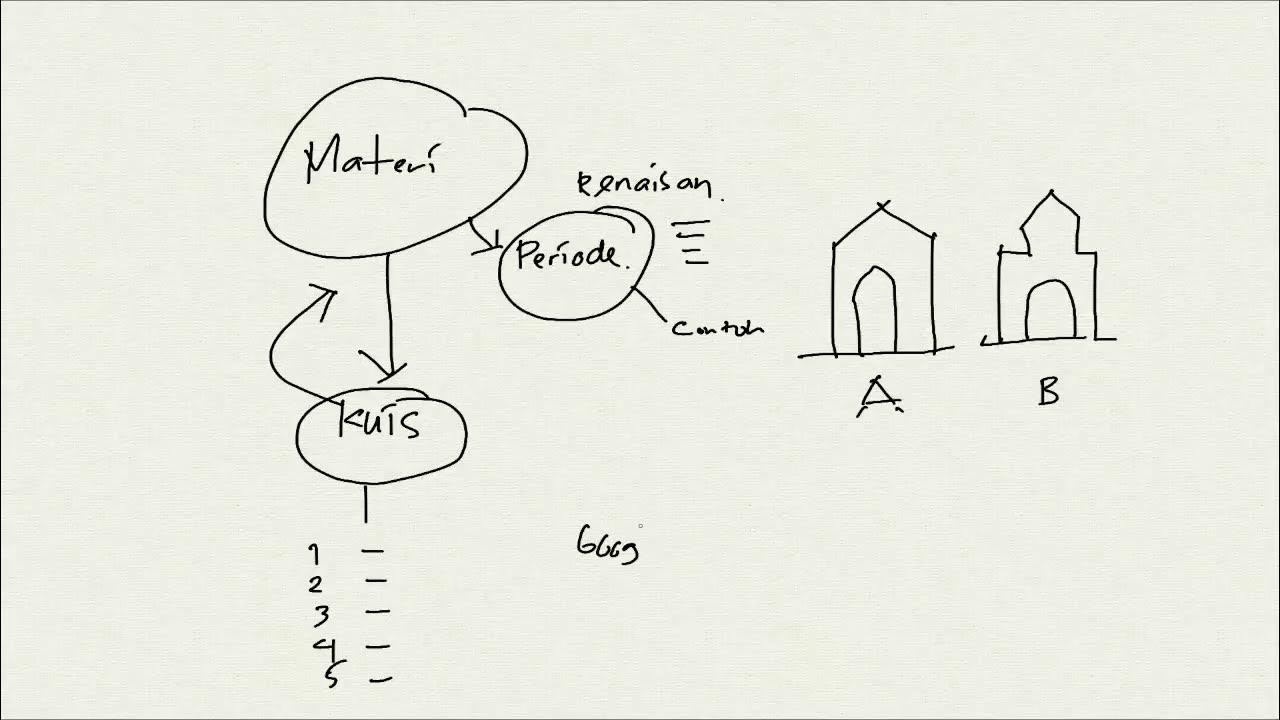Seni Rupa dua Dimensi Kelas XII Semester 1 (Rangkuman materi)
Summary
TLDRIn this semester, students will explore the intricacies of visual arts under the guidance of Pa Hasddy. The lecture delves into the classification of two-dimensional art based on materials, techniques, time of creation, and purpose. It distinguishes between pure art and functional art, emphasizing the subjective nature of aesthetic value influenced by personal experiences and cultural backgrounds. The creative process involves idea generation, sketching, and transferring concepts to a medium, culminating in exhibition and audience appreciation. The session concludes with an invitation to further explore the topic through textbooks and various sources, thanking participants for their attentiveness.
Takeaways
- 🎨 The course will explore cultural arts, specifically focusing on visual arts.
- 🖌️ The script outlines a classification system for two-dimensional visual art based on material, technique, time of creation, and function or purpose.
- 📦 Materials used in two-dimensional art include leather, metal, wood, and others.
- 🛠️ Techniques in two-dimensional art encompass batik, carving, weaving, and engraving.
- 🕰️ The time-based categories for two-dimensional art include prehistoric, traditional, classical, modern, contemporary, and post-modern works.
- 🎭 Functionally, two-dimensional art is divided into 'fine art' for aesthetic appreciation and 'functional art' for practical use.
- 👀 The aesthetic value of a piece of art is subjective and influenced by the harmony and arrangement of its visual elements.
- 🌐 Aesthetic appreciation varies from person to person, influenced by individual experiences and cultural backgrounds.
- 💡 The creative process of two-dimensional art involves an artist finding ideas or concepts, selecting materials and techniques, and sketching or designing the piece.
- 🖼️ The final step in the process is presenting the completed artwork to the public, often through exhibitions where the audience can appreciate and provide feedback.
- 📚 Students are encouraged to further explore the subject matter using their textbooks and various information sources.
- 🙏 The speaker concludes by thanking the audience for their participation and attention, and apologizes for any mistakes made during the presentation.
Q & A
What is the main topic of the lecture?
-The main topic of the lecture is the study of two-dimensional visual arts, specifically focusing on cultural arts.
How are two-dimensional artworks classified according to the script?
-Two-dimensional artworks are classified based on the materials used, the techniques of creation, the time of creation, and the function or purpose of the creation.
What are the categories of materials used in two-dimensional artworks as mentioned in the script?
-The categories of materials include leatherwork, metalwork, woodworking, and others.
Can you list the techniques used in creating two-dimensional artworks as per the script?
-The techniques include batik art, wood carving, weaving, and engraving.
How does the script categorize two-dimensional artworks based on the time they were created?
-Artworks are categorized as prehistoric, traditional, classical, modern, contemporary, post-modern, and so on.
What are the two main functions or purposes of two-dimensional artworks according to the script?
-The two main functions are fine art (pure art) and functional art (applied art).
What does the script say about the aesthetic value of two-dimensional artworks?
-The aesthetic value is subjective and depends on an individual's taste, influenced by personal experiences and cultural backgrounds.
What is the process of creating a two-dimensional artwork as described in the script?
-The process starts with the artist finding an idea or concept, then sketching or designing it, transferring the idea to a medium like canvas, and finally presenting it to the public through exhibitions.
How does the script describe the role of the audience in the presentation of two-dimensional artworks?
-The audience is involved in the appreciation process, where they give feedback, suggestions, and identify benefits or advantages of the artwork.
What does the script suggest for further exploration of the topic?
-The script suggests looking into the student book provided or seeking information from various sources for further exploration.
What is the closing statement of the lecturer in the script?
-The lecturer thanks the audience for their participation, attentive listening, apologizes for any mistakes, and looks forward to meeting again.
Outlines

Cette section est réservée aux utilisateurs payants. Améliorez votre compte pour accéder à cette section.
Améliorer maintenantMindmap

Cette section est réservée aux utilisateurs payants. Améliorez votre compte pour accéder à cette section.
Améliorer maintenantKeywords

Cette section est réservée aux utilisateurs payants. Améliorez votre compte pour accéder à cette section.
Améliorer maintenantHighlights

Cette section est réservée aux utilisateurs payants. Améliorez votre compte pour accéder à cette section.
Améliorer maintenantTranscripts

Cette section est réservée aux utilisateurs payants. Améliorez votre compte pour accéder à cette section.
Améliorer maintenantVoir Plus de Vidéos Connexes

Program kuliah sejarah seni

Music and Arts Grade 7 Quarter 1 Week 3 MATATAG Curriculum

4 FORMAS DE ENTRAR NA FACULDADE PÚBLICA | Como conseguir uma vaga na faculdade federal ou estadual

Cambios de secundaria a prepa - Misión Admisión

RAJASTHAN UNIVERSITY UG SEMESTER BA BSC BCOM BACK PAPER SYLLABUS 2024 | BACK PROMOTED EXAM KAB HOGI?

PENGENALAN SENI RUPA | MATERI SENI RUPA SMK KELAS X | KURIKULUM MERDEKA
5.0 / 5 (0 votes)
